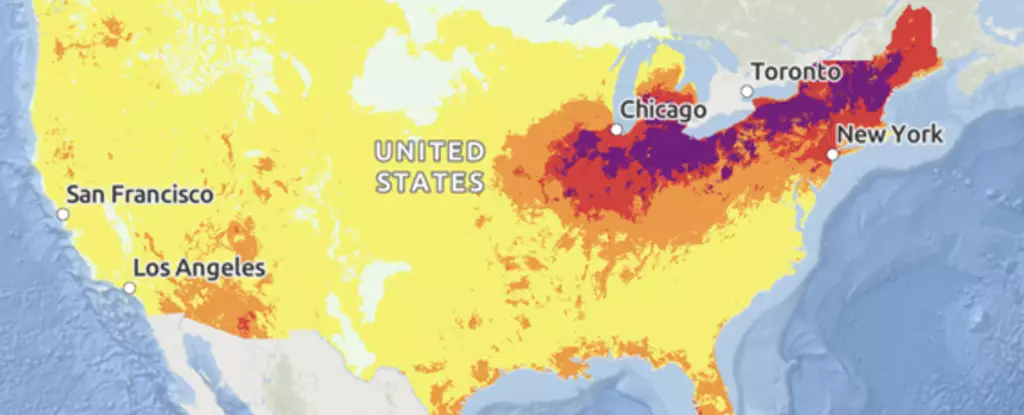As the summer of 2024 kicks off, more than 260 million people are bracing themselves for a challenging heatwave that is set to break records across northeastern US. The National Weather Service (NWS) has issued warnings about the duration and intensity of this heatwave, stating that it may be the longest experienced in decades for some regions. A heat dome is expected to move eastward from the Great Lakes towards New England, bringing scorching temperatures of up to 41°C (105°F). Overnight temperatures are not providing much relief either, with expected lows in the mid 20s°C (70s°F).
Heat domes are formed when high pressure atmospheric systems linger over an area for an extended period, trapping warm air underneath. The heat trap predicted by the NWS is arriving unusually early this year, and its duration may be long enough to cause droughts in some regions. The combination of early heat arrival, prolonged duration, abundant sunshine, and lack of overnight relief poses a great risk to public health. Cities in New York, Massachusetts, Pennsylvania, Ohio, Illinois, Indiana, Missouri, and Michigan are at extreme risk, especially for those who lack access to cooling or hydration.
Urban areas are particularly vulnerable to extreme heat due to the heat island effect, which is caused by heat-retaining materials used in construction and a lack of cooling vegetation. Experts recommend staying indoors as much as possible, especially for vulnerable individuals like children, the elderly, and pregnant women. Drinking plenty of water and taking frequent breaks are strongly advised for those who must go outdoors. It’s important to watch out for signs of heat stress in yourself and others, and to regularly check on loved ones who may be at higher risk. Never leave vulnerable people or pets in a parked car, as temperatures can quickly become lethal.
Despite being preventable, heat-related deaths are on the rise in the US. Heatwaves like the one expected in the summer of 2024 are becoming more common due to worsening human-induced climate change. Extreme heat events are not only increasing in intensity and duration but also bringing along greater fire danger. It is crucial to take the threat of heatwaves seriously and to take proactive measures to stay safe and cool during such challenging weather conditions.
The upcoming heatwave poses a significant risk to public health in northeastern US. It is important to heed the warnings issued by the National Weather Service and to take necessary precautions to protect oneself and others from the dangers of extreme heat. By staying informed, staying hydrated, and staying cool, we can all mitigate the risks associated with this unprecedented heatwave.


Leave a Reply